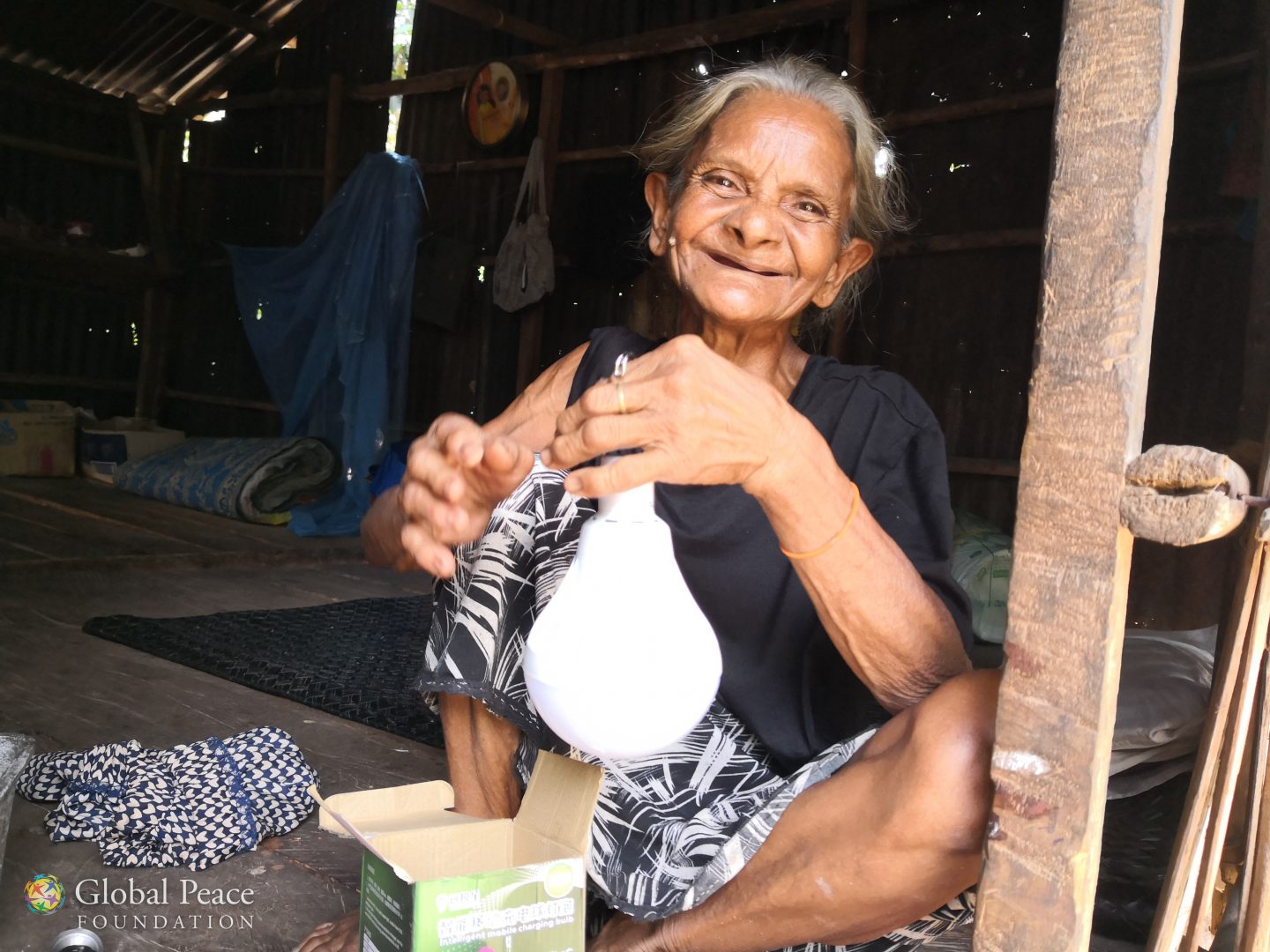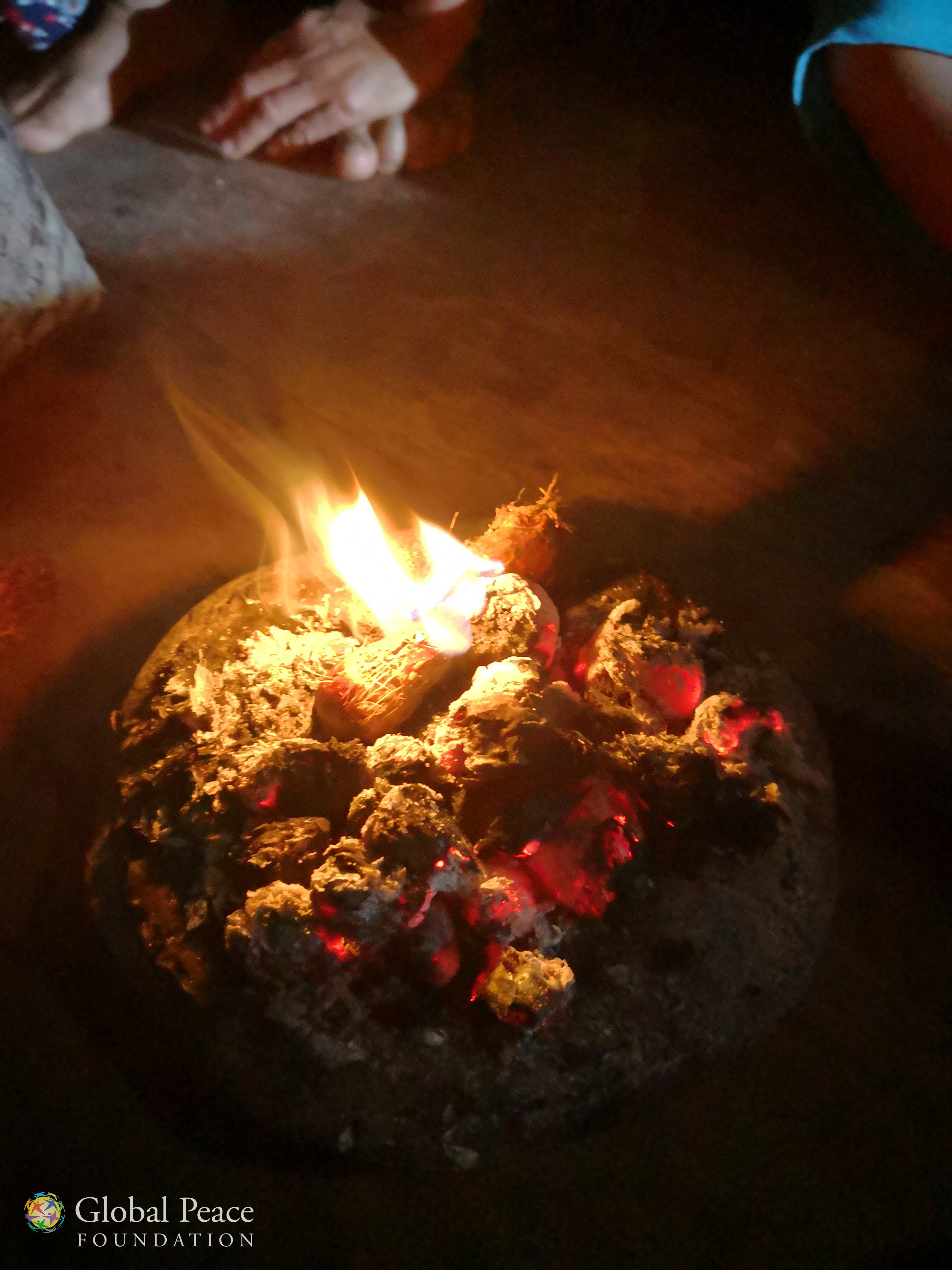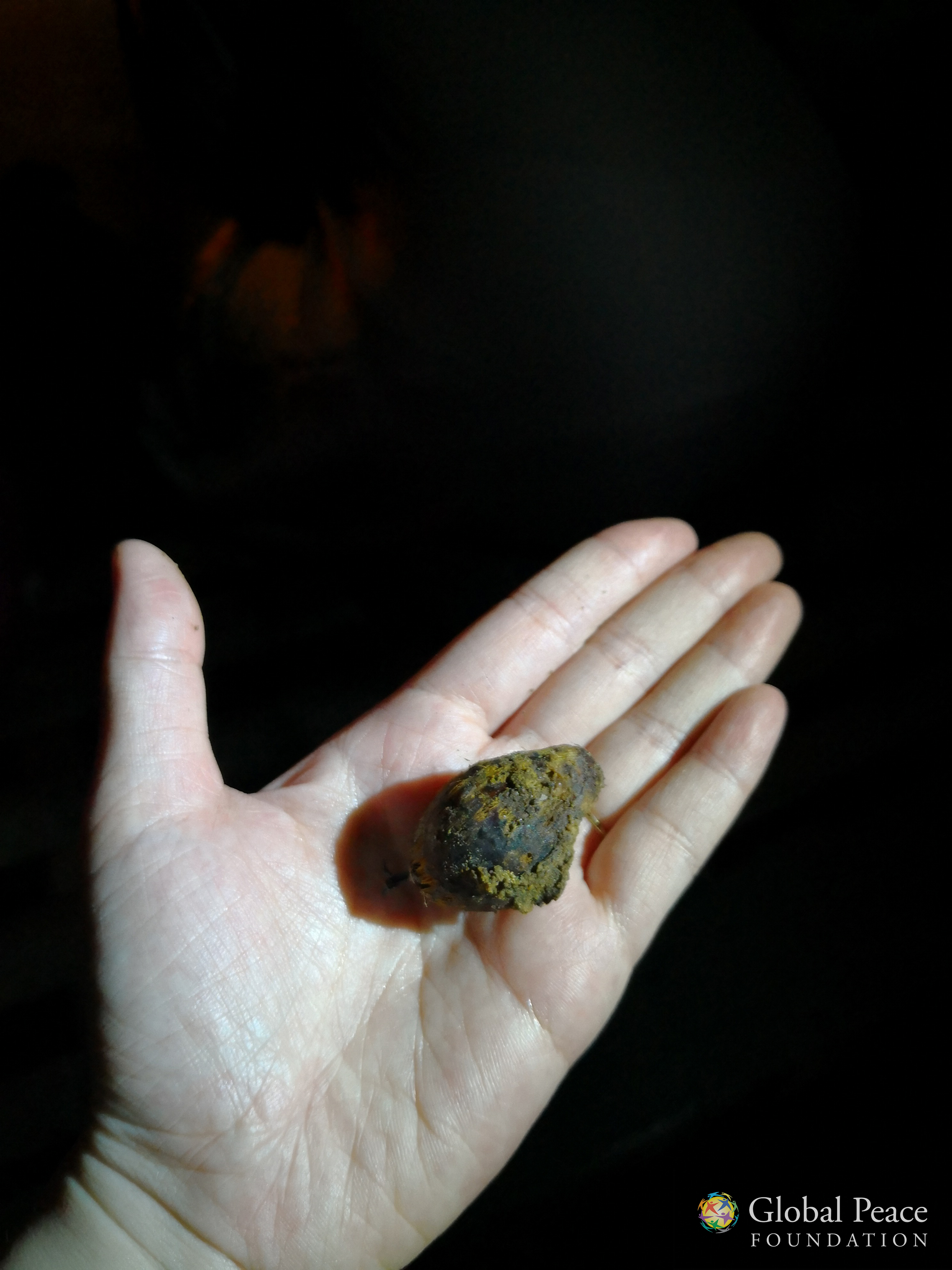Nenek Jamilah is a Jakun orang asli living deep in the interiors of Pahang. Her husband has long passed away so she lives alone. Despite being in her 80s, she still works as a rubber tapper, earning RM60-70 every two weeks.
She spent RM25 of her hard-earned money to buy a USB rechargeable lamp to provide light during the night. Although she is pleased with her lamp, she still has to ask for help to charge it and if it burns out, she’ll have to endure long nights by candlelight until she can save enough money for another one.

Nenek Jamilah showing us her USB lamp that she purchased from a peddler that comes to her village every few days.
Living in Darkness
Her village, like many other orang asli communities in Pahang, still do not have access to electricity. As a result, they resort to burning oil lamps, palm kernel lamps, and candles.
We experienced this first-hand when we spent the night in Kampung Padang to get to know the orang asli’s life better. We joined a family sitting in front of their wooden hut. It was 8pm and the family had gathered around a small fire made by burning palm kernels. There was a lot of smoke and the heat became unbearable after a while.


Bonfire built by burning palm kernels; there was a lot of smoke that chokes the air and burns the eyes.
Nordin, the family’s elder, explained that they only keep the fire burning for an hour at most. When it becomes too hot, they put it out and go to sleep. There is nothing else they can do under the blanket of darkness, such is their life.
Families that could afford it would spend on short-term solutions like batteries, power banks, and fuel-powered generators. Heavy duty 6V batteries and power banks can be used to power small electronics and bulbs while a generator can power televisions, fans, and lights for several houses.

A 6V battery and kerosene lamp typically used in orang asli homes.
They are also able to charge their mobile devices, which are important for work purposes and in emergency cases. The alternative would be travelling to town to charge their phones at RM1 an hour.
However, the generator costs at least RM5 to run for 3-4 hours and batteries have to be replaced time and time again. With low and unstable sources of income, it quickly becomes a hefty and worrying expense for these families.
A Sustainable Solution
We introduced the All-Lights Village solar project to the orang asli villages near Muadzam Shah and Chini in late August 2018. A Global Peace Development programme in several countries including Philippines, Korea, Japan, and Cambodia, “the All-Lights Village project is a long-term community development programme that combines solar technology with clean water solutions, education, income generation, and public-private partnerships to improve the overall quality of life in measurable and sustainable ways.”
Each person and each village has different needs, so our tailored solutions take into account factors like daily energy consumption, average household income, and suitability. In villages with no sources of energy and low income levels, we provide partner-funded solar home systems that consists of a solar panel, two light bulbs, a tube light, a flashlight, phone charging USB port, and a battery pack. It provides six to 24 hours of light depending on usage, which is enough for nighttime use and phone charging during the day.
In villages that rely heavily on fuel-powered generators, we offer a high-power solar system that can reduce their generator usage. It is partially-funded and each household pays for the system through a one-year instalment plan.
We conduct a training and demonstration session to ensure that everyone understands how to use, install, and maintain the system. The endeavour involves the whole village and it’s very encouraging to see everyone helping each other. We would visit the community regularly to follow-up and inspect the solar system and usage to ensure there are no problems.
A Brighter Future

Juriah with her well-lit cooking space.
Juriah from Kampung Gong D is one of the beneficiaries of the home solar system. During the daytime, the inside of her house was already very dark. We could only imagine how it would be like come night. “I have to use a headlamp to cook sometimes. It’s very inconvenient. At night, my daughter asked me how is she going to read. I asked her to use this flashlight, it’s all we have.” Juriah tells us that she’s looking forward to having her daughter back from boarding school so that she can do her schoolwork with the solar lamps.
The impact of providing a village with a sustainable form of energy does not just end with them having a few hours of light at night. The money that they save on spending for fuel and batteries can be channelled to more important things like their children’s education, food, and personal savings.
They can be more productive at night; mothers can do housework in well-lit conditions, children can study and read, and families can stay connected to each other through their mobile phones.
Solar energy is environmentally-friendly and does not produce smoke that pollutes the air and potentially be a health hazard.
World Bank reports that Peninsular Malaysia has almost 100% of electrification, one of the highest in the Southeast Asian region. But, we wonder how many more Nenek Jamilahs, Juriahs, and Kampung Padangs that are still out there, who make do with whatever they have to get through the long, dark nights.
For many of the orang asli living below the national poverty line, this can be a way for them to lift themselves towards a better and brighter future.
Written by
Yong Joy Anne, Storyteller






